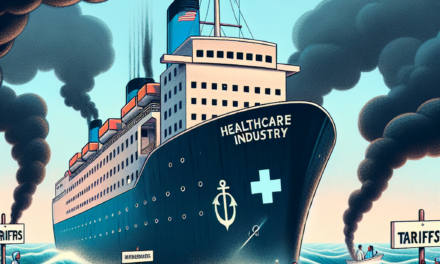-
Table of Contents
- Walgreens Announces Closure of 1,200 Locations: A Comprehensive Analysis
- 1. The Strategic Rationale Behind Walgreens’ Decision
- 1.1 Financial Performance and Cost-Cutting Measures
- 1.2 Shifts in Consumer Behavior
- 1.3 Competitive Pressures and Market Dynamics
- 1.4 Real Estate Optimization
- 1.5 Regulatory and Policy Considerations
- 2. Impact on Communities and Employees
- 2.1 Community Access to Healthcare Services
- 2.2 Employment and Workforce Implications
- 2.3 Economic Impact on Local Businesses
Walgreens Announces Closure of 1,200 Locations: A Comprehensive Analysis

In a surprising move, Walgreens, one of the largest pharmacy chains in the United States, has announced the closure of 1,200 of its locations. This decision has sent ripples through the retail and healthcare industries, raising questions about the future of brick-and-mortar pharmacies, the impact on communities, and the strategic direction of Walgreens. This article delves into the reasons behind this significant decision, its implications, and what it means for the future of retail pharmacies.
1. The Strategic Rationale Behind Walgreens’ Decision
Walgreens’ decision to close 1,200 stores is not an isolated event but rather a strategic move influenced by various factors. Understanding these factors is crucial to comprehending the broader implications of this decision.
1.1 Financial Performance and Cost-Cutting Measures
Walgreens has been facing financial challenges over the past few years, with declining profits and increasing competition from both traditional and online retailers. The decision to close a significant number of stores is part of a broader cost-cutting strategy aimed at improving the company’s financial health.
According to recent financial reports, Walgreens has seen a decline in foot traffic and sales in many of its locations. This trend has been exacerbated by the rise of e-commerce and changing consumer preferences. By closing underperforming stores, Walgreens aims to streamline its operations and focus on more profitable locations.
Moreover, the closures are expected to save the company millions in operational costs, which can be redirected towards enhancing its digital presence and investing in more lucrative ventures. This move is in line with the broader trend of retail companies optimizing their physical footprint to adapt to the digital age.
1.2 Shifts in Consumer Behavior
Consumer behavior has undergone significant changes in recent years, with a growing preference for online shopping and home delivery services. This shift has been accelerated by the COVID-19 pandemic, which forced many consumers to rely on digital platforms for their shopping needs.
Walgreens has recognized this shift and is adapting its business model accordingly. By closing physical stores, the company can focus on expanding its online offerings and improving its digital infrastructure. This includes enhancing its e-commerce platform, developing a robust delivery network, and leveraging data analytics to better understand and serve its customers.
The closures also reflect a broader trend in the retail industry, where companies are increasingly prioritizing digital channels over traditional brick-and-mortar stores. This shift is driven by the need to meet changing consumer expectations and remain competitive in a rapidly evolving market.
1.3 Competitive Pressures and Market Dynamics
The retail pharmacy sector is highly competitive, with major players like CVS, Rite Aid, and Amazon vying for market share. Walgreens’ decision to close stores is partly a response to these competitive pressures and the need to differentiate itself in a crowded market.
Amazon’s entry into the pharmacy space, with its acquisition of PillPack and the launch of Amazon Pharmacy, has intensified competition and forced traditional retailers to rethink their strategies. Walgreens is responding by focusing on its core strengths, such as its extensive network of healthcare professionals and its commitment to providing personalized care.
Additionally, Walgreens is exploring partnerships and collaborations to enhance its offerings and expand its reach. For example, the company has partnered with VillageMD to open primary care clinics in select locations, providing a more comprehensive healthcare experience for its customers.
1.4 Real Estate Optimization
Real estate optimization is another key factor driving Walgreens’ decision to close stores. The company is reevaluating its real estate portfolio to ensure that its locations align with its strategic goals and provide maximum value.
By closing underperforming stores, Walgreens can focus on optimizing its remaining locations and investing in areas with higher growth potential. This includes expanding its presence in urban centers and high-traffic areas, where demand for pharmacy services is higher.
Furthermore, the closures provide an opportunity for Walgreens to renegotiate leases and reduce its real estate costs, which can have a significant impact on its bottom line. This strategic realignment is essential for the company’s long-term success and sustainability.
1.5 Regulatory and Policy Considerations
Regulatory and policy considerations also play a role in Walgreens’ decision to close stores. The healthcare industry is subject to a complex web of regulations and policies that can impact business operations and profitability.
Walgreens must navigate these regulatory challenges while ensuring compliance with state and federal laws. The closures may be part of a broader effort to streamline operations and reduce regulatory burdens, allowing the company to focus on its core competencies and strategic priorities.
Additionally, changes in healthcare policy, such as the expansion of telehealth services and the shift towards value-based care, are influencing Walgreens’ strategic direction. By closing stores and investing in digital health solutions, the company can better align itself with these emerging trends and position itself for future growth.
2. Impact on Communities and Employees
The closure of 1,200 Walgreens locations will have a significant impact on the communities they serve and the employees who work there. Understanding these implications is crucial to assessing the broader consequences of this decision.
2.1 Community Access to Healthcare Services
Walgreens plays a vital role in providing access to healthcare services in many communities, particularly in underserved areas. The closure of stores could limit access to essential medications and healthcare services for residents who rely on their local pharmacy.
This is especially concerning in rural and low-income areas, where Walgreens may be one of the few healthcare providers available. The closures could exacerbate existing healthcare disparities and create barriers to accessing necessary care.
To mitigate these impacts, Walgreens is exploring alternative solutions, such as expanding its delivery services and partnering with local healthcare providers to ensure continuity of care. However, these efforts may not fully compensate for the loss of physical locations in some communities.
2.2 Employment and Workforce Implications
The closure of 1,200 stores will result in significant job losses, affecting thousands of Walgreens employees. This includes pharmacists, pharmacy technicians, store managers, and support staff who will be displaced as a result of the closures.
Walgreens has stated that it will provide support and resources to affected employees, including severance packages, job placement assistance, and opportunities for redeployment within the company. However, the loss of jobs will have a ripple effect on local economies and communities.
The closures also raise questions about the future of the retail pharmacy workforce and the skills needed to succeed in an increasingly digital and competitive environment. Walgreens and other pharmacy chains will need to invest in workforce development and training to ensure their employees are equipped to meet the demands of the evolving healthcare landscape.
2.3 Economic Impact on Local Businesses
The closure of Walgreens stores will have economic implications for local businesses and communities. Many small businesses rely on foot traffic generated by Walgreens locations, and the loss


